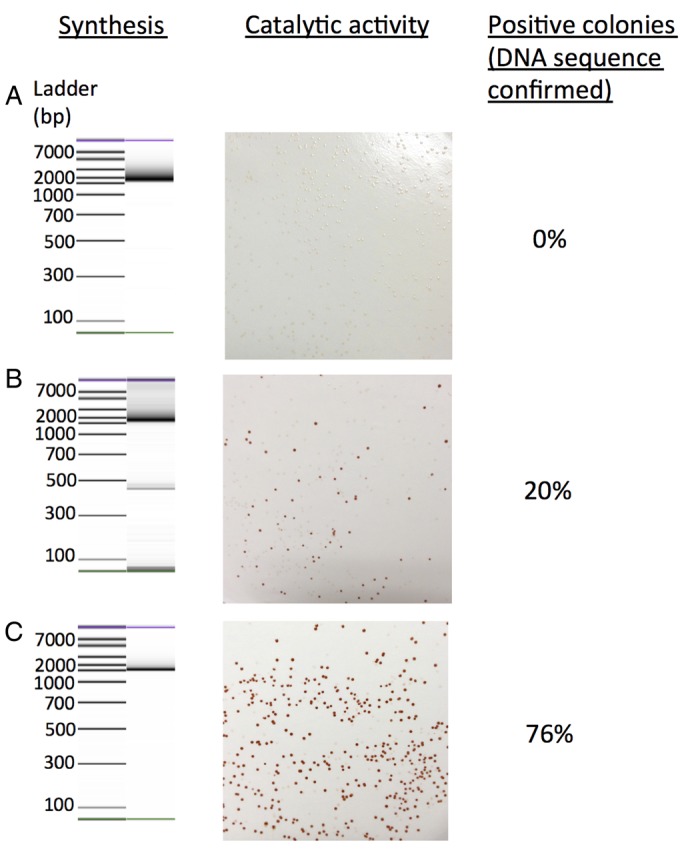Fig. 2.

A comparison of gene synthesis error-correction techniques using microfluidic capillary electrophoresis, catalytic activity assays and DNA sequencing. (A) Synthesis of MAO-N with no error correction yielded highly erroneous gene sequences, illustrated by the increased amounts of longer fragments shown in the gel-like image. Expression of these sequences in E. coli yielded no colonies with catalytic activity and the presence of errors was identified by DNA sequencing. (B) Conventional Surveyor digestion of the full-length MAO-N sequence did not produce a pure product after the final OE-PCR (shown) and yielded 20% E. coli colonies with oxidase activity and correct sequence. (C) The SpeedyGenes method greatly improved the PCR synthesis of MAO-N. Expression of these sequences yielded 76% colonies with activity and correct DNA sequence.
